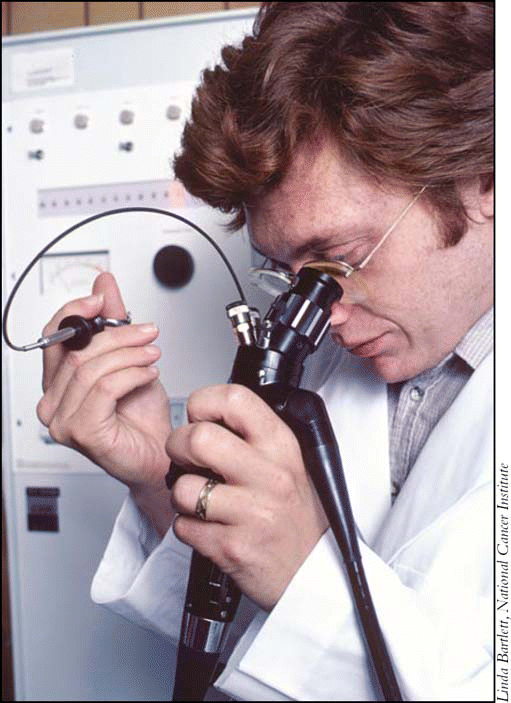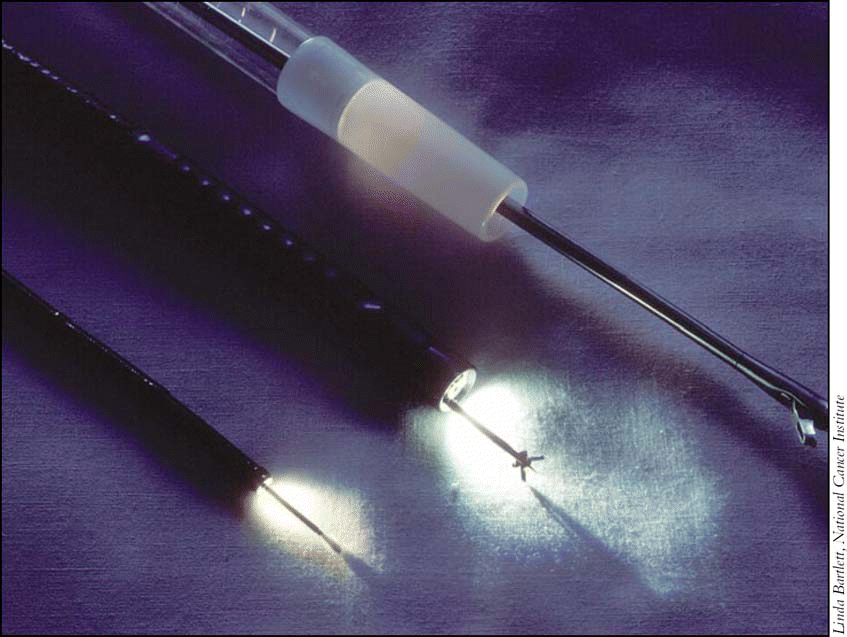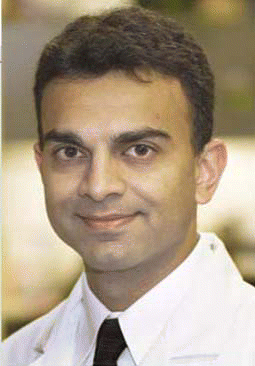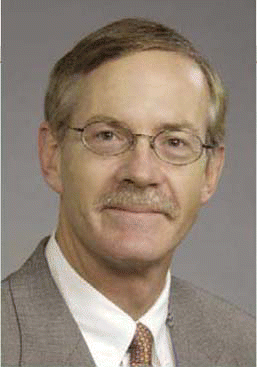CHICAGO-Obviously, there are times when a trip to the operating room is the only option, but more and more physicians are finding that more and more screening, diagnostic, and minimally invasive procedures are best performed in the office setting. Reduced risks, better recovery times, and favorable reimbursement are just a few of the issues that often make many laryngology and esophagology procedures attractive candidates for an office-based approach, according to Albert Merati, MD, Chief of Laryngology, Associate Professor of Otolaryngology and Communication Sciences and Director of the Center for Communication and Swallowing Disorders at the Medical College of Wisconsin in Milwaukee.
Explore This Issue
August 2006
Dr. Merati served as moderator for a special panel discussion hosted by the American Broncho-Esophageal Association here at the Combined Otolaryngology Spring Meetings (COSM). The panelists discussed some of the key issues related to office-based techniques, including utility of the procedure, equipment needed, indications and contraindications, and the economic implications of various techniques.
Transnasal Flexible Laryngoscopy and Biopsy
Transnasal flexible laryngoscopy (TFL) is commonly used in the office setting to evaluate patients with vocal cord paralysis or vocal fold tumors, but it is also very effective for obtaining tissue for biopsy, said Jonathan Aviv, MD, Professor of Otolaryngology-Head and Neck Surgery and Medical Director of the Voice and Swallowing Center at Columbia University Medical Center in New York City.
The indications for unsedated transnasal flexible laryngoscopy and biopsy are really very broad. We use this as a substitute for intraoperative direct laryngoscopy and biopsy under general anesthesia, Dr. Aviv said. This is not a substitute for laryngeal phonomicrosurgery, be very clear on this. This is for those white lesions and red lesions that you see in the office, that you see at the tongue base and you see in the larynx. We usually follow these things, but why follow them when you can get a definitive tissue diagnosis right away?
Dr. Aviv said his goal is to perform the procedure without the need for any injections, using only a topical anesthesia, typically 2% plain xylocaine, dropped directly on the vocal folds.
Then the instrument we use is a either a disposable brush or disposable biopsy forcep with suction attached, and a flexible laryngoscope that has a working channel, he said. The advantage of the brush is you can biopsy a broad lesion. The disadvantage is you can’t get through the basement membrane and you can’t detect invasion, which you can do with a cup forcep.
Advantages for Patient and Physician
The ability to perform the procedure without the need for general anesthesia, however, is the overriding advantage of office-based laryngoscopy, Dr. Aviv said.
The surgery, I don’t worry about. I worry about the anesthesia. Once you start sedating someone, and once you start intubating, that’s when the problems arise, he said. Not only do I worry about it, but the literature corroborates it time and again. There is much less risk for the patient and, for those patients who care to, they can go back to work the same day.
There is also a significant economic advantage to performing the procedure in an office-based setting-an economy of both time and money. Dr. Aviv noted the Relative Value Unit (RVU) for direct laryngoscopy and biopsy in the operating room is 5.4, while a TFL biopsy done in the office actually gets reimbursed at a higher value of 5.78.
In our institution, when we do a direct laryngoscopy biopsy, it takes about two hours total. Thirty minutes or so to get the line and put the patient under. It takes us five minutes to do our part and then it takes about 45 minutes to wake the patient up, Dr. Aviv said. If you can do it much faster at your institution, then I want your manual.

That works out to about 2.7 RVUs an hour for a procedure performed in-hospital. So how does that compare to in-office?
For the same biopsy in the office, no matter how slow we go, it never takes us more than 30 minutes, he said. That’s about 11.5 RVUs an hour. You don’t need an MBA to figure that one out.
Lasers
Steven Zeitels, MD, Chair of Laryngeal Surgery of Harvard Medical School in Boston, Mass., offered his perspective on the use of lasers in the office setting, including the pulsed KTP, pulsed dye laser (PDL), and the newer thulium laser.
The big issue for us, when you use the PDL, for example, is there was a significant amount of bleeding because of the nature of the PDL, Dr. Zeitels said. That’s not good if you’re working on a patient in the office. If the blood goes under the basement membrane, then you’re going to heat the blood under the basement. If it leaks out, the patient starts coughing and you’re going to get more bleeding and lose your window of opportunity with local anesthesia. You only get about 20 to 25 minutes, and if you re-dose the lidocaine into the trachea, you run the risk of lidocaine toxicity.
Another limitation of the PDL, according to Dr. Zeitels, is the 0.6 mm fiber, which he said cannot be reduced. The fiber can cut up the channel of the scope and we were getting frequent repairs. That is a problem, he said. The solid-state laser in the KTP is much more reliable; we’ve never had a breakdown with it. Also, the length and width of the KTP is about the same, but it was 16 inches deep as opposed to 38 inches deep, so the footprint it takes up in your clinic is less.
A big advantage of the KTP is the ability to use different sized fibers-0.2 mm to 0.6 mm-which is critical to being able to suction effectively during the procedure.
You want a small fiber so you can control all of the secretions and whatever blood may happen, he said. But there’s almost no bleeding with the KTP, you don’t need to calibrate, and the pulse width is variable. It’s a lovely instrument to use.
Dr. Zeitels believes the new thulium laser, which was originally developed in Germany to cut brain tissue, also holds great promise.
The thulium simulates the function of a CO2 laser but gets delivered on a fiber, he said. They’ve already used it to cut kidneys and have done partial nephrectomies without cross-clamping the renal artery. Basically, anything that’s ablative, you can do with the thulium.
I have really started to do a lot more diagnostic testing with the injection procedure. Instead of just taking them to the operating room, I may inject them with a temporary substance and just see if their symptoms improve. – -Milan Amin, MD
Transnasal Esophagoscopy
Gregory Postma, MD, Professor of Otolaryngology and Director of the MCG Center for Voice and Swallowing Disorders at the Medical College of Georgia in Augusta, is a big fan of transnasal esophagoscopy (TNE), noting that physicians are still discovering new indications for this versatile and reliable technology.
With TNE, we can biopsy virtually anything, anywhere, he said. We’ve biopsied lesions of the nasopharynx with this, and gone as far down as the right upper lobe bronchus under topical anesthesia. We have taken literally thousands of biopsies and have yet to have a single complication.
TNE can also be used to evaluate foreign bodies, he noted, but I don’t advocate their removal, although if they’re distal, we’ve had great success at pushing these into the stomach.
TNE has also turned out to be a useful tool in screening for Barrett’s esophagus, he said, citing recently published articles in the gastroenterological literature suggesting that transnasal esophagoscopy may indeed be the best screening tool for Barrett’s.
We have also seen a lot of people with chronic cough and have been very surprised at how many of these had pathology in the esophagus, so that is certainly an indication for performing TNE, Dr. Zeitiels said. We’ve used it for the placement of wireless pH capsules without sedation. We dilate strictures using concentric radial expansion balloons without sedation, and we can do a ton of other cool procedures.
Regarding the economic efficacy of TNE, Dr. Zeitels said it is extraordinarily well reimbursed in the office, but cautions physicians to keep in mind that, in order to be reimbursed, the esophagoscopy has to be compatible with the diagnosis.
With transnasal esophagoscopy, we can biopsy virtually anything, anywhere. …We have taken literally thousands of biopsies and have yet to have a single complication. – -Gregory Postma, MD
Chronic cough, for example, will be denied, he said. So when I see my chronic cough patients, I’m actually looking for something like esophagitis or reflux or dysphagia, so that my diagnosis is compatible with the procedure.
Injection Laryngoplasty
Office-based injection laryngoplasty is certainly nothing new, but had become something of a lost technique, mainly due to the paucity of substances that could be directly injected into the vocal folds, said Milan Amin, MD, Assistant Professor of Otolaryngology and Director of the NYU Voice Center Department at the New York University Medical Center in New York City.
A lot of things moved into the operating room and fat was injected until collagen came along and, for quite a while, that was the only other injectable substance available, he said. Recently, though, there’s been a resurgence because of some of the new materials out there. Things have kind of gone back toward office-based injection laryngoplasty.
Dr. Amin said some of the indications for injection laryngoplasty include vocal cord paralysis and vocal fold bowing due to atrophy, paresis, or presbylaryngis, noting that the materials can be injected for either temporary use or for permanent correction.
So if somebody comes in and has a presumed injury, but you’re not sure about the folds, you can certainly inject them and buy them some time to see if the injury will recover, he said. I have really started to do a lot more diagnostic testing with the injection procedure. Instead of just taking them to the operating room, I may inject them with a temporary substance and just see if their symptoms improve. If that works out, then I can go back in and do something more permanent.
A big advantage of injection laryngoplasty as an office-based procedure is that it is not equipment-intensive.
The indications for unsedated transnasal flexible laryngoscopy and biopsy are really very broad. We use this as a substitute for intraoperative direct laryngoscopy and biopsy under general anesthesia. – -Jonathan Aviv, MD
You probably have most of the equipment already, so the main cost after that is the injection materials, Dr. Amin said. And remember, most insurance will not cover the injection materials. I have the patient pay for them. I give them two options-go into the operating room where the injection materials are paid for, or do it in the office and they pay for the injection material. Most of them would rather pay and have it done in the office.
©2006 The Triological Society


Leave a Reply